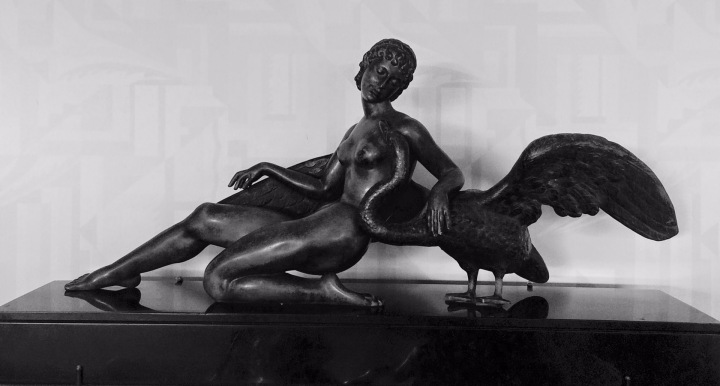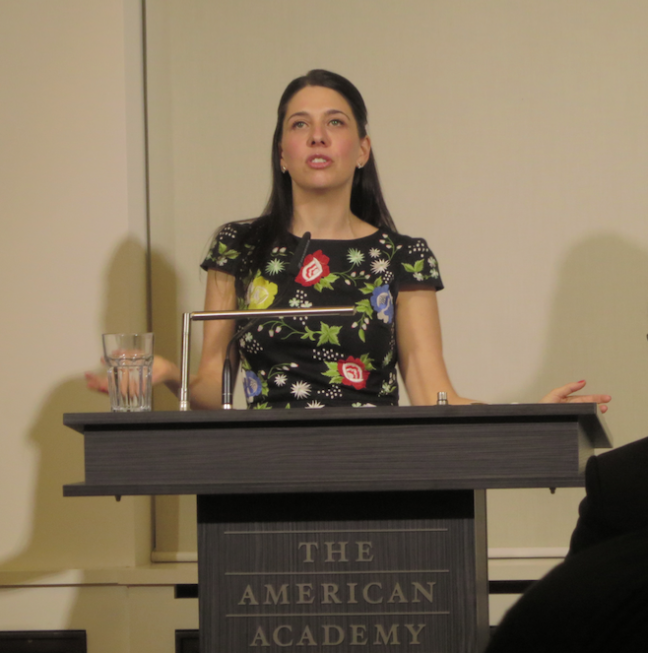 Leda and the Swan, c. 1930, France, by Neva
Leda and the Swan, c. 1930, France, by Neva
Art Deco objet d’art from the SFO exhibit. The story of Leda raped by Zeus in the form of a swan became an erotic motif in art in Renaissance Venice, and continued to be so in Modernism. W.B. Yeats wrote an often anthologized poem in the same period.
A sudden blow: the great wings beating still
Above the staggering girl, her thighs caressed
By the dark webs, her nape caught in his bill,
He holds her helpless breast upon his breast.
How can those terrified vague fingers push
The feathered glory from her loosening thighs?
And how can body, laid in that white rush,
But feel the strange heart beating where it lies?
Neva’s sculpture is rather tame compared to the poet’s recollection of the scene. What about it is so erotically charged? The tentacular neck wrapped around the girl’s breasts? Down feather frottage against her loosening thighs? The sadism of all-engulfing wings, of her restraint with sharp beak and webbed claws?
A shudder in the loins engenders there
The broken wall, the burning roof and tower
And Agamemnon dead.
Being so caught up,
So mastered by the brute blood of the air,
Did she put on his knowledge with his power
Before the indifferent beak could let her drop?
Yeats then turns and invests the rape with historic significance. It foreshadows the fall of Troy, a war fought over the rape of Helen, fruit of Leda’s union with the swan, as well as Agamemnon’s death in the hands of Clytemnestra, also daughter of Leda. Yeats in fact uses the stronger word “engender” to suggest Leda’s insemination as ultimate cause of these ensuing tragedies.
The poem ends with the mysterious line: “Did she put on his knowledge with his power?” Did Leda, overpowered, see the vision of her ravisher, the foreknowledge of future violence in the throes of her own violation?
Sex and violence, knowledge and power, commingling into one.
(SFO Art Deco Exhibit, 2015)
Advertisements Share this:




